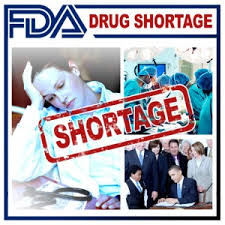The number of prescription drugs that are in short supply in the U.S. has increased by nearly 75%, to about 265, over the past five years, according to the University of Utah’s Drug Information Service, the Wall Street Journal reports.
The list of drugs in short supply includes a variety of medicines, such as cancer treatments, antibiotics and commodity items. For example, drugs that have been in short supply include the:
- Antibiotic Zosyn;
- Bladder cancer treatment BCG;
- Droperidol, a drug used in emergency departments for headaches, nausea and abdominal pain issues; and
- Generic painkiller ketorolac.
In general, shortages could be a result of companies’ failure to build adequate production capacity, inadequate equipment maintenance and contamination in aging plants, as well as an FDA crackdown on quality issues that led companies to reduce production, according to the Journal. For example, ketorolac manufacturer Hospira in January informed customers that more than 18 million vials of ketorolac would be recalled because of crystal particle contamination. In addition, Zosyn has been in short supply because of “unplanned” maintenance, plant repairs and an increase in demand.
Further, many of the shortages are of older, injectable drugs that can be costly to make but have relatively low prices, according to the Journal. For example, BCG, which is off-patent, can be costly to produce but sells for only about $145 per vial. In comparison, Avastin, a newer cancer drug that still is patent-protected, sells for about $2,700 per vial. According to the Journal, Avastin has not experienced shortage issues.
Shortages can lead physicians to turn to less-effective alternatives, according to the Journal.
Government Actions
Valerie Jensen, associate director of FDA’s drug-shortages program, said the department works with companies to keep medically necessary products available but it cannot order a company to continue production, the Journal reports.
A federal law passed in 2012 gave FDA greater power to address shortages by requiring manufacturers to provide notice of potential shortages and permitting FDA to accelerate manufacturing approvals upgrades. According to FDA, the number of new shortages fell from a peak of 251 in 2011 to 44 last year.
However, a Government Accountability Office report in 2014 said FDA could do more to address shortages.
Meanwhile, a new FDA software application for mobile devices identifies shortages and allows users to report a suspected shortage to FDA (Loftus, Wall Street Journal, 5/31).
Specialist Criticizes Rx Prices
In related news, a prominent cancer specialist criticized the price of new cancer treatments at the annual American Society of Clinical Oncology meeting on Sunday, the Wall Street Journal reports.
At the meeting, Leonard Saltz, chief of gastrointestinal oncology at Memorial Sloan Kettering Cancer Center, pointed to statistics that show the median monthly price of new cancer drugs in the U.S. in inflation-adjusted dollars increased by nearly 200% from the period between 2000 and 2004 to the period between 2010 and 2014. In the period from 2000 to 2004, the price was about $4,716, compared with $9,900 in the period from 2010 to 2014, according to Saltz.
He said the price increases have not corresponded with an increase in effectiveness.
Saltz said, “The unsustainably high prices of cancer drugs is a big problem, and it’s our problem.” He added, “All of the stakeholders involved need to stop pretending that price is something we don’t need to discuss, because it affects all of us, and it’s affecting our ability to deliver quality care to everyone.” He noted that physicians might avoid talking about drug pricing because they are expected to focus on what is best for patients without considering cost.
Drugmakers have said that the drugs reflect their value to patients. They also have said that they spend considerable sums on research and development, as well as on subsidizing out-of-pocket costs through patient assistance programs (Walker, Wall Street Journal, 6/1).
